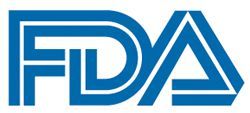News
Article
FDA Approves Companion Diagnostic for Zolbetuximab in CLDN18.2+ Gastric/GEJ Cancer
Key Takeaways
- The Ventana® CLDN18 (43-14A) RxDx Assay identifies CLDN18.2 protein expression for zolbetuximab eligibility in gastric or GEJ adenocarcinoma patients.
- Zolbetuximab, combined with chemotherapy, is approved for first-line treatment of HER2-negative, CLDN18.2-positive gastric or GEJ adenocarcinoma.
The FDA has approved the Ventana CLDN18 (43-14A) RxDx Assay as a companion diagnostic for zolbetuximab in CLDN18.2-positive gastric/GEJ cancer.
FDA

The FDA has approved the Ventana® CLDN18 (43-14A) RxDx Assay—an immunohistochemistry (IHC) companion diagnostic—for use in determining Claudin 18.2 (CLND18.2) protein expression in patients with gastric or gastroesophageal junction (GEJ) adenocarcinoma who may be eligible for treatment with zolbetuximab-clzb (Vyloy).1
On October 22, 2024, the regulatory agency approved zolbetuximab in combination with fluoropyrimidine- and platinum-containing chemotherapy for the first-line treatment of adult patients with locally advanced, unresectable, or metastatic, HER2-negative gastric or GEJ adenocarcinoma whose tumors are CLDN18.2-positive, as determined by an FDA-approved test.2
“Patients who are diagnosed with gastric or GEJ cancer are often diagnosed in an advanced stage as early symptoms can be similar across several conditions,” Jill German, head of Pathology Lab at Roche Diagnostics, stated in a news release.1 “Our companion diagnostic for CLDN18 can help identify patients eligible for targeted treatment and provide them with additional therapeutic options. With the launch of this test, Roche continues to advance personalized health care by expanding our innovative companion diagnostic portfolio.”
The approval of zolbetuximab was supported by data from the phase 3 SPOTLIGHT (NCT03504397) and GLOW (NCT03653507) trials, which both utilized the Ventana assay to determine CLDN18.2 expression during the study.2-4 Both studies required CLDN18.2 positivity for enrollment and was defined as at least 75% of tumor cells expressing moderate-to-strong membranous CLDN18 staining per central IHC.
Findings from SPOTLIGHT showed that patients treated with zolbetuximab plus mFOLFOX6 (n = 283) achieved a median progression-free survival (PFS) of 10.6 months (95% CI, 8.9-12.5) vs 8.7 months (95% CI, 8.2-10.3) for those treated with placebo plus chemotherapy (n = 282; HR, 0.751; 95% CI, 0.598-0.942; 1-sided P = .0066).2,3 The zolbetuximab regimen elicited a median overall survival (OS) of 18.2 months (95% CI, 16.4-22.9) vs 15.5 months (95% CI, 13.5-16.5) with the placebo regimen (HR, 0.750; 95% CI, 0.601-0.936; 1-sided P = .0053).2
Data from GLOW demonstrated that the combination of zolbetuximab and CAPOX (n = 254) generated a median PFS of 8.2 months (95% CI, 7.5-8.8) vs 6.8 months (95% CI, 6.1-8.1) for placebo plus CAPOX (n = 253; HR, 0.687; 95% CI, 0.544-0.866; 1-sided P = .0007).2,4 The median OS was 14.4 months (95% CI, 12.3-16.5) and 12.2 months (95% CI, 10.3-13.7), respectively (HR, 0.771; 95% CI, 0.615-0.965; 1-sided P = .0118).
SPOTLIGHT Design
SPOTLIGHT was a global, randomized, placebo-controlled, double-blind trial that included patients at least 18 years of age with CLDN18.2-positive, HER2-negative, previously untreated, locally advanced, unresectable, or metastatic gastric or GEJ adenocarcinoma.3
Other key inclusion criteria comprised radiologically evaluable disease per RECIST 1.1 criteria, an ECOG performance status of 0 or 1, and adequate organ function.
Investigators randomly assigned patients 1:1 to receive 800 mg/m2 of zolbetuximab on day 1 of cycle 1, then 600 mg/m2 on day 22 of cycle 1 and days 1 and 22 of subsequent cycles in combination with mFOLFOX6, which consisted of folinic acid at 400 mg/m2, fluorouracil at 400 mg/m2 bolus followed by 2400 mg/m2 in a 46- to 48-hour infusion, and oxaliplatin at 85 mg/m2 on days 1, 15, and 29 for up to 4 42-day cycles; or placebo plus mFOLFOX6.
After 4 cycles of chemotherapy, patients who did not experience disease progression continued with zolbetuximab or placebo, and folinic acid and fluorouracil could also be continued at investigator discretion. Zolbetuximab or placebo were continued until disease progression, unacceptable toxicity, or other discontinuation criteria were met.
PFS per RECIST 1.1 criteria served as the trial's primary end point. Secondary end points were OS and time to confirmed deterioration.
GLOW Methodology
GLOW was a global, randomized, double-blind study that enrolled adult patients with CLDN18.2-positive, HER2-negative, previously untreated, locally advanced unresectable or metastatic gastric/GEJ tumors who had radiologically evaluable disease per RECIST 1.1 criteria, an ECOG performance status of 0 or 1, and adequate organ function.4
Patients were randomly assigned 1:1 to receive zolbetuximab at 800 mg/m2 on cycle 1, day 1, followed by 600 mg/m2 on day 1 of subsequent 21-day cycles, plus CAPOX; or placebo plus CAPOX. CAPOX in both arms was given as oral capecitabine at 1,000 mg/m2 twice per day on days 1 to 14 of each cycle and oxaliplatin at 130 mg/m2 on day 1 of each cycle for up to 8 cycles.
After completing CAPOX, patients continued with zolbetuximab or placebo, and capecitabine could be continued at investigator discretion. Treatment with zolbetuximab or placebo continued until disease progression, unacceptable toxicity, or other discontinuation criteria were met.
Investigator-assessed PFS per RECIST 1.1 criteria was the primary end point. Secondary end points consisted of OS and time to confirmed deterioration.
References
- Roche receives FDA approval for the first companion diagnostic to identify patients with gastric and gastroesophageal junction cancer eligible for targeted treatment with Vyloy. News release. Roche. October 18, 2024. Accessed October 22, 2024. https://diagnostics.roche.com/us/en/news-listing/2024/roche-receives-fda-approval-for-first-companion-diagnostic-to-identify-patients-with-gastric-and-gastroesophageal-junction-cancer-eligible-for-targeted-treatment-with-vyloy.html
- FDA approves zolbetuximab-clzb with chemotherapy for gastric or gastroesophageal junction adenocarcinoma. FDA. October 18, 2024. Accessed October 22, 2024. https://www.fda.gov/drugs/resources-information-approved-drugs/fda-approves-zolbetuximab-clzb-chemotherapy-gastric-or-gastroesophageal-junction-adenocarcinoma
- Shitara K, Lordick F, Bang YJ, et al. Zolbetuximab plus mFOLFOX6 in patients with CLDN18.2-positive, HER2-negative, untreated, locally advanced unresectable or metastatic gastric or gastro-oesophageal junction adenocarcinoma (SPOTLIGHT): a multicentre, randomised, double-blind, phase 3 trial. Lancet. 2023;401(10389):1655-1668. doi:10.1016/S0140-6736(23)00620-7
- Shah MA, Shitara K, Ajani JA, et al. Zolbetuximab plus CAPOX in CLDN18.2-positive gastric or gastroesophageal junction adenocarcinoma: the randomized, phase 3 GLOW trial. Nat Med. 2023;29(8):2133-2141. doi:10.1038/s41591-023-02465-7









